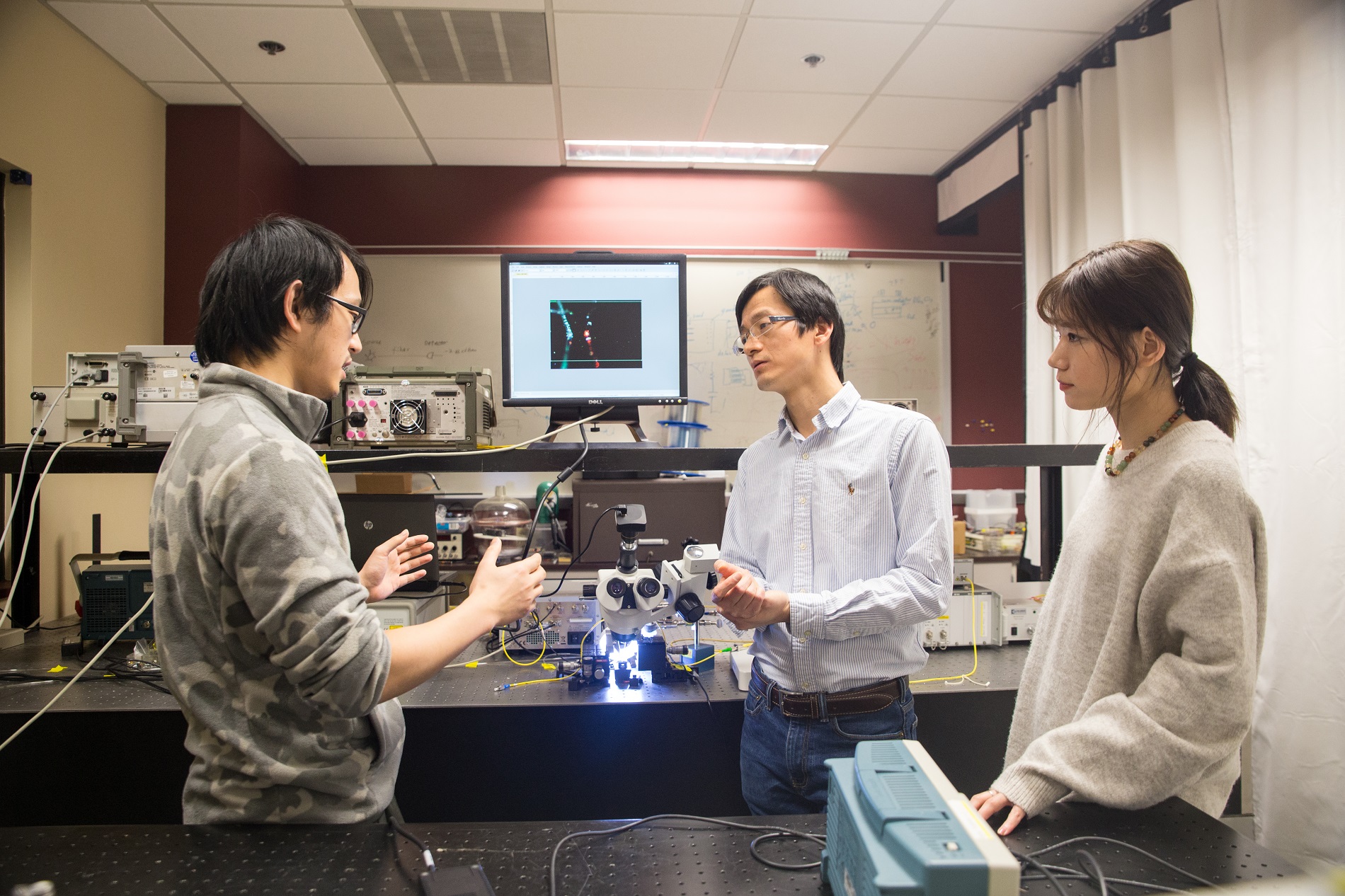01/22/2018
CORVALLIS, Ore. – Researchers at Oregon State University have designed and fabricated the world’s smallest electro-optic modulator, which could mean major reductions in energy used by data centers and supercomputers.
An electro-optic modulator plays the key role in fiber optic networks. Just as a transistor is a switch for electronic signals, an electro-optic modulator is a switch for optical signals. Optical communication uses light, so the modulator turns on and off the light that sends a stream of binary signals over optical fibers.
The new modulator is 10 times smaller and can potentially be 100 times more energy efficient than the best previous devices. It is roughly the size of a bacterium, measuring 0.6 by 8 microns.
“This is by far the most exciting research I have ever done because of the impact the device will bring and because of the challenge it was for design and fabrication,” said Alan Wang, associate professor of electrical engineering in the OSU College of Engineering.
The paper was published by Nano Letters.

A tiny photonic crystal nanocavity is integrated with a metal-oxide-semiconductor (MOS) capacitor to create the smallest electro-optic modulator in the world. The energy consumption can be potentially reduced below 1 femtojoule per bit.
Photo by Oregon State University
For their invention, Wang and his doctoral student, Erwen Li, leveraged technology also developed at Oregon State: transparent conductive oxide materials. The structure they invented uses a transparent conductive oxide gate instead of a typical metal gate to combine a metal-oxide semiconductor capacitor with an ultra-compact photonic crystal nanocavity.
The design, combining innovations in materials and devices, enhanced the interaction between electronics and photonics, which enabled the researchers to create a smaller electro-optic modulator.
Wang had consulted his colleagues in industry about whether he was on the right track for developing something they could use.
“They told me reducing the size and reducing the energy consumption is going to be the trend in the next five to 10 years in industry. So this is exactly the kind of device they're looking for,” Wang said.
The research is part of a Department of Defense Multidisciplinary University Research Initiative award. Wang is one of the six researchers from across the nation who received the five-year grant from the Air Force Office of Scientific Research to advance technologies to reduce energy consumption of optoelectronic devices.















